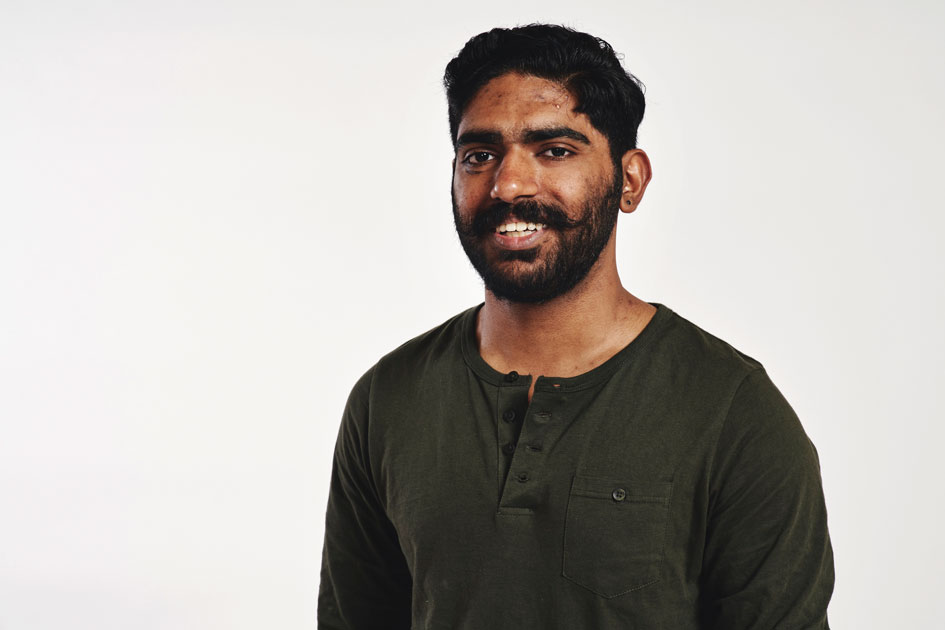Using AI To Read—And Speak—the Language of Proteins
Meet computer science major Ananthan Nambiar ’19.
Major: Computer Science
Hometown: Penang and Kuala Lumpur, Malaysia
Thesis advisers: Prof. Mark Hopkins [computer science ] and Prof. Anna Ritz [biology]
Thesis title: Computing the Language of Life
What it’s about: I studied the use of tools from natural language processing and deep learning to interpret biological sequences as a language. These techniques were then used as nonalignment-based methods to predict the function of proteins based on just the primary sequence information.
What it’s really about: If proteins make up a language, how can we tell what a protein “means?”
In high school: I was a little competitive and adamant on getting things right.
Influential Reed classes: Three classes had a huge impact on my time at Reed: 1. Computational Methods with Prof. Andrew Larkoski [physics] was the first time I got formal exposure to the techniques necessary to apply concepts from math and physics to realistic problems. 2. In Computation with Prof. Mark Bedau [philosophy], I got the unique chance to think about computation and artificial intelligence from a philosophical perspective. This class also led to my involvement in several research projects. 3. With my thesis, Mark Hopkins and Anna Ritz allowed me to pursue a very interdisciplinary topic despite not being an interdisciplinary major.
Concept that blew my mind: The universal approximation theorem states that feed-forward multilayer neural networks are universal approximators for any continuous function on a closed and bounded subset of the reals (. . . given some assumptions).
Cool stuff: I participated in the Association for Computing Machinery Pacific Northwest Region Programming Contest on a team called Algogriffins 2, and conducted an independent study with Prof. Larkoski, where I got my first exposure to deep learning by using neural networks to study the Higgs boson decay to a pair of tau leptons. I used data from the ATLAS experiment at the Large Hadron Collider at CERN for this. Another fun thing that I did was teach at several elementary schools in the Portland area for the Reed Science Outreach program.
Challenges I faced: Moving to the U.S. was quite challenging. Like many international students, I had never been to the U.S. before Reed. It didn’t take long to realize that Reed was not very representative of the country in general.
Financial aid: I turned down a full-ride scholarship to a prestigious university in the U.K. to attend Reed. This decision would not have been possible if I hadn’t received a generous financial aid package.
Awards, fellowships, grants: Student Opportunity Subsidy (SOS) Grant, Reed Opportunity Grant.
What’s next: I’m heading to the University of Illinois at Urbana-Champaign to get my PhD and will be working in collaboration with Argonne National Laboratory to use deep learning for cancer drug predictions and studying microbial ecosystems.
Tags: Diversity/Equity/Inclusion, International, Students, Thesis, What is a Reedie?
